Communication technology continuously advances, making it possible for everyone to connect everywhere. This is particularly important in public safety. Today, mobile command centers enable emergency response, medical personnel and intelligence teams to reliably and securely connect out in the field where the action is happening, and where teams on the ground are managing critical situations — from fires, floods and hurricanes to civil unrest and public emergencies.
So, what are mobile command centers, who uses them and what kind of technology is onboard? In this blog post, we describe several types of mobile command units, their use cases in public safety and emergency response, and how Digi supports them with reliable, cost-effective communications technology.
What Is a Mobile Command Center?
A mobile command center is a mission critical vehicle that is equipped for incident response in the field. This mobile command trailer, bus or truck operates as a central office — equipped with a range of communications technology, including satellite dishes, cellular routers and Wi-Fi connections to ensure connectivity — as well as video screens, desktops, laptops and peripherals. The vehicle is typically used as a central hub for communication between teams of emergency responders to manage on-site medical, fire and rescue emergencies, as well as government intelligence and military operations.
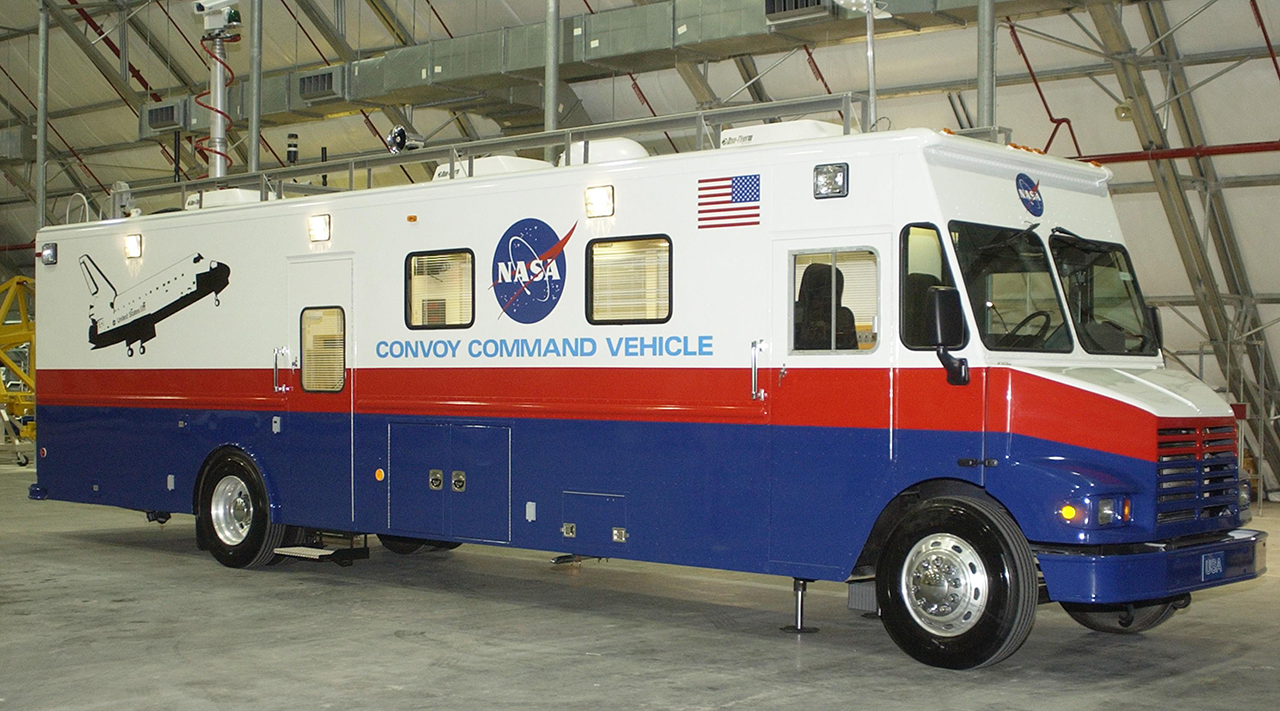
Photo credit: NASA, Public domain, via Wikimedia Commons
6 Key Benefits of a Mobile Command Center
Mobile command centers are used in a diverse range of situations requiring rapid response, information accessibility, visuals such as live-stream video or satellite footage, and interactive communication with teams on the ground. This means they must be equipped with a wide range of supporting devices, video and communication capabilities within the hub.
Here are six key benefits of a mobile command center:
Rapic response: When disaster strikes, first responders know that time becomes the enemy. Responding quickly to situations while also keeping communications flowing is critical whenever lives are at stake, and especially in a rapidly changing scenario. Mobile command centers help ensure rapid, effective response to the emergency by quickly arriving directly at the scene, or as close to the hub of the emergency as safety allows.
Communication hub: The mobile command center is not only the central hub for all medical devices, military equipment, or crime investigation resources, but the core of connectivity and information delivery. With access points for satellite, Wi-Fi, and cellular connectivity, the mobile command center is equipped for rapid and reliable communications, enabled by mobile access routers like Digi TX solutions.
Located at the scene: From disaster response to situation management and crime prevention, a mobile command center can be at the scene — wherever communication is needed to manage the incident responders. The mobile unit can arrive at a scene and act as the central hub of communication and operations, giving first responders the ability to get to the disaster site and keep information flowing and response teams equipped and informed.
Satellite connectivity: Natural disasters require a range of communications, sometimes across large distances. These sites may be very remote, or powerlines may be down, creating challenges for connectivity and communications. They also typically require views of the disaster scene — such as a wildfire, forest fire or volcano — obtained via satellite. Mobile command units are equipped with generators to keep power running along with satellite dishes to stay connected to emergency teams, or even other units in the area. Digi Safe™ includes fast, reliable mobile access routers that support the full range of connectivity needs in mobile command centers.
First responder networks: In times of emergency, communication networks can become jammed with the range of communications from first responders, municipalities and private citizens. First responder networks such as FirstNet®, Verizon Frontline, and T-Mobile Connecting Heroes, provide reliable networks that support mission critical communications, ensuring that first responders can remain connected and in communication at all times.
Customizable to a range of use cases: Each mobile command center can be customized for an intended purpose, whether that is preparing for a wildfire, flood, hurricane, or other natural disaster, a large-scale public emergency such as a riot or massive chemical spill, or localized events requiring medical or police response. Required features can include equipment for managing medical, hazardous material and weather disasters as well as surveillance equipment, visual equipment for tracking weather systems, and communications equipment to stay connected to response teams.
Examples of Mobile Command Center Vehicles
With onboard computers, routing, and communications devices for coordinating with dispatch centers, response teams and hospitals, mobile command center vehicles reduce response time and provide critical communications links in many situations.
Police Mobile Command Center
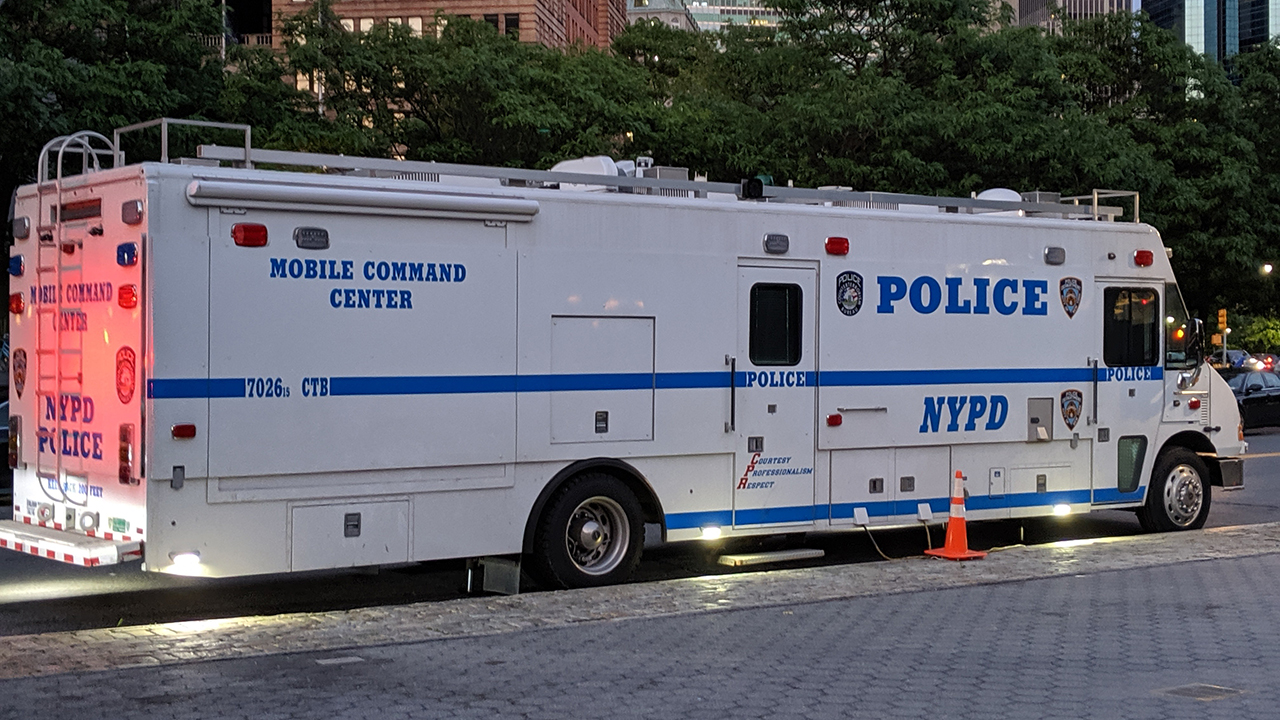
Photo credit: CyprianLatewood, CC BY-SA 4.0, via Wikimedia Commons
A police mobile command center allows for teams to get up in action at the crime scene. When it comes to situational awareness and responding to public emergencies, rapid response and reliable, secure communications are critical. In addition to managing communications with response teams, the command units are used as centers of operation, with private meeting rooms, equipped with whiteboards and TVs for quick briefing and planning sessions.
Mobile Operations Command Center — Disaster Response
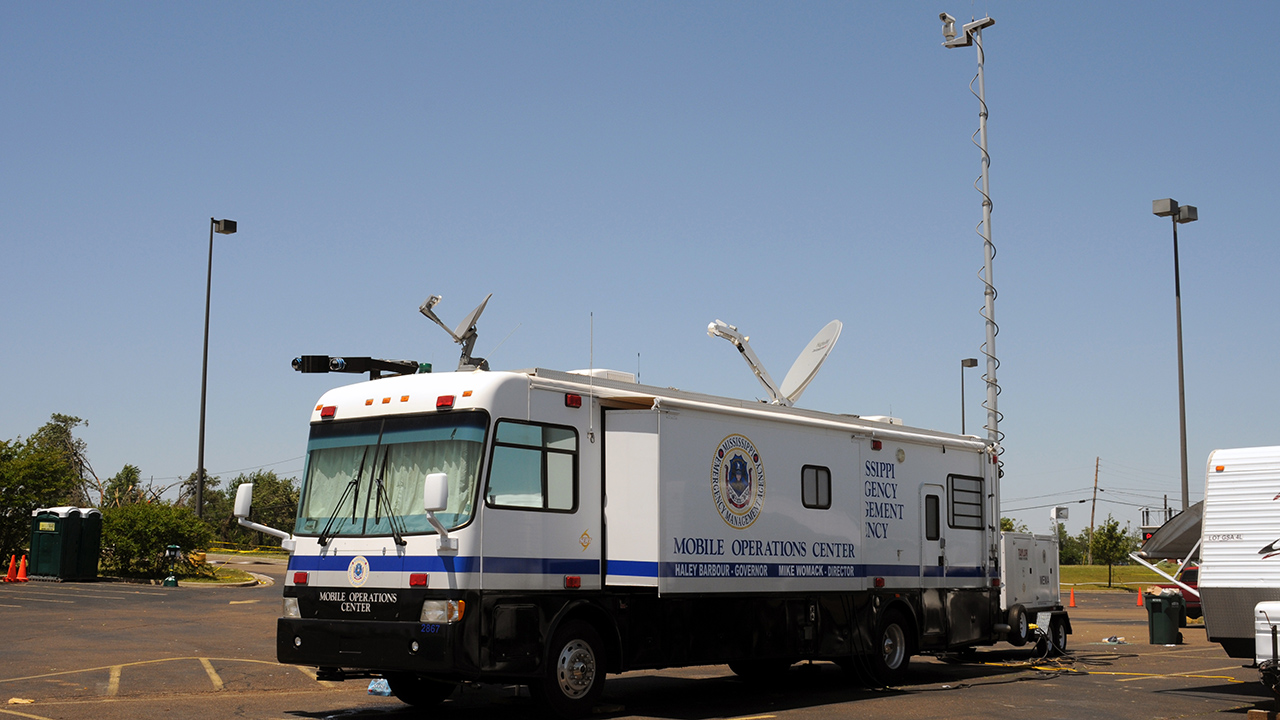
Photo credit: George Armstrong, Public domain, via Wikimedia Commons
Also known as a mobile emergency response center, the unit provides emergency communications that help better control a critical situation in a range of emergencies. Designed for rapid disaster management, and run by federal agencies such as FEMA and local governments, these units are often stationed at the scene in the aftermath of natural disasters and can be sent to manage disease outbreaks and other public emergencies. These units are equipped with the technology and medical devices needed to assess situations, communicate rapidly, and save lives.
Fire and Rescue Mobile Command Center

Photo credit: Seluryar from Akron Ohio, USA, CC BY-SA 2.0, via Wikimedia Commons
These units are outfitted for fire scenarios as well as hazardous materials response, and can be mobilized for everything from wildfires to nuclear disasters, power plant emergencies, explosions and chemical spills. These vehicles can be equipped as mobile laboratories in which substances can be tested and analyzed for rapid detection, enabling fire crews to respond appropriately.
Military Mobile Command Center
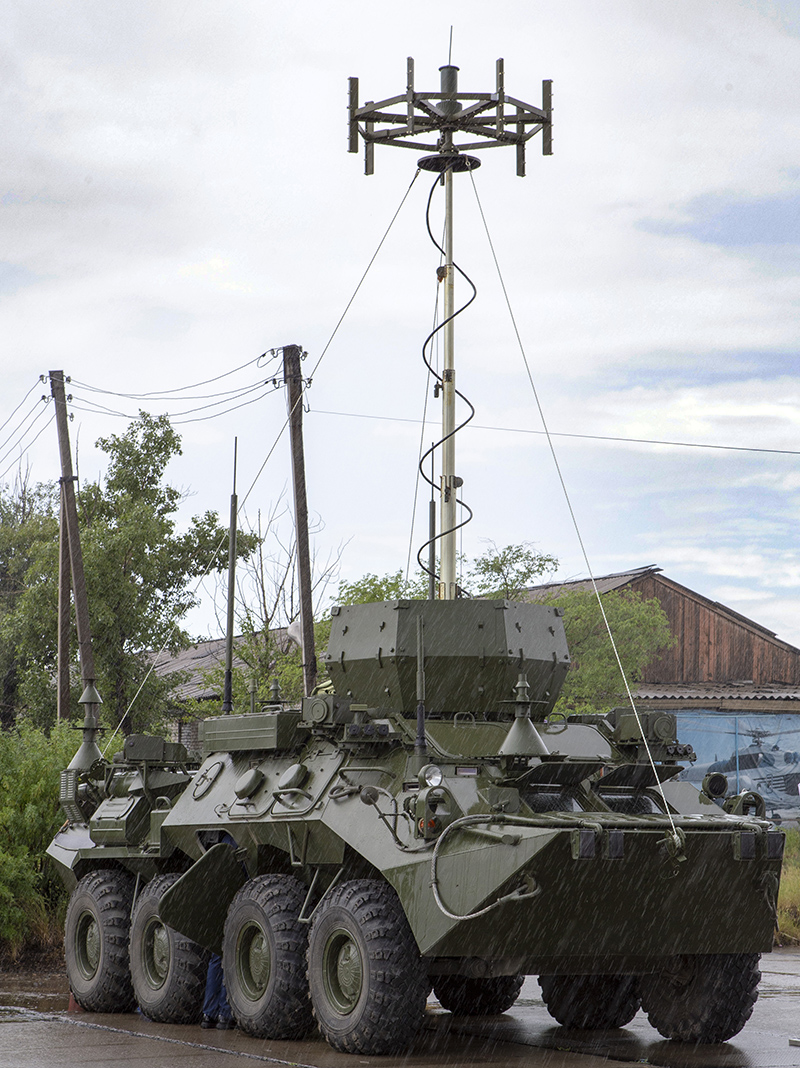 Military mobile command centers provide self-contained, self-sufficient spaces for personnel to operate equipment, perform surveillance, and support communications teams on the ground.
Military mobile command centers provide self-contained, self-sufficient spaces for personnel to operate equipment, perform surveillance, and support communications teams on the ground.
These units are equipped for secure communications and real-time video display streamed from satellite, aircraft, and military teams. They support mission-critical intelligence and the management of tactical operations from any location.
The military mobile command center is also equipped to distribute intelligence to teams at a local level and up to the federal level, such as to a central military intelligence center or the commander-in-chief.
Photo credit: Getty Images
Inside a Mobile Command Center
Response teams must be equipped with the proper technology to stay connected, as communication becomes critical for any emergency incident. This is especially true of remote and mobile response teams that manage on-site emergencies such as floods and hurricanes, where infrastructure has suffered damage and connectivity may be sparse. These vehicles must be equipped with satellite and cellular, with the most advanced antenna and reception systems to ensure reliable connectivity to computers, radios and video equipment.
Our diagram represents some of the key technology and connectivity in a typical mobile command center, and the role Digi's 5G mobile cellular transportation solution plays. The Digi TX cellular router is rugged, secure, and purpose-built for challenging transportation and mobile environments. Built-in technology to support persistent connections and location services includes WAN bonding (also known as WAN aggregation) to ensure connectivity via the best possible link, Wi-Fi 6 dual-band (2.4 GHz and 5 GHz) concurrent 2 x 2 MIMO operation, and Untethered Dead Reckoning (UDR) for highly accurate positioning.
Additionally, Digi TX routers are FIPS-140-2 certified — offering critical security required for cryptographic modules in US government.
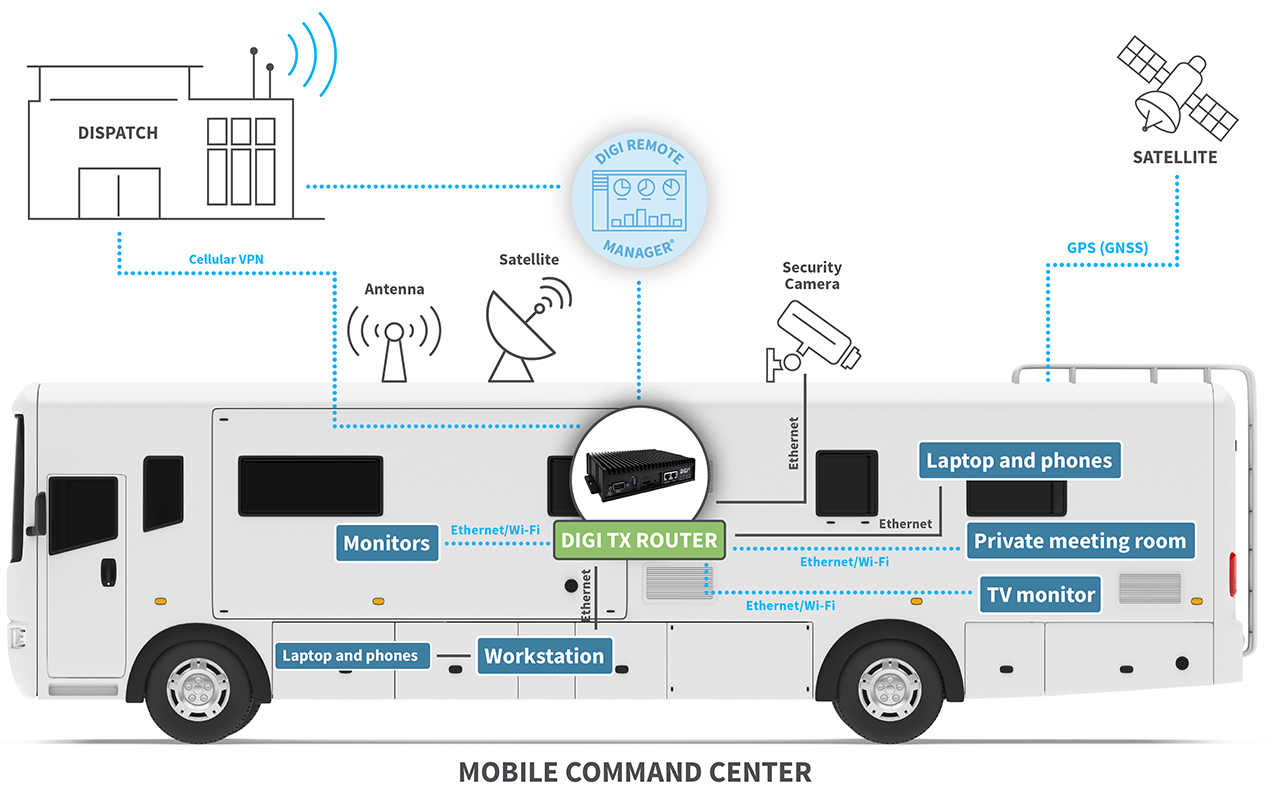 Encompassed by Digi SAFE™, which is created with rugged hardware built to withstand punishing vibrations and weather extremes — a mobile command center will be properly equipped to go remote. Located at the center of the vessel, the router supports easy access to connectivity throughout the mobile command unit. At the heart of Digi SAFE is Digi Remote Manager® — the command center of your secure, intelligent public safety network. Digi Remote Manager enables IT teams to monitor, manage and update devices in the field, enabling units in remote locations to stay connected.
Encompassed by Digi SAFE™, which is created with rugged hardware built to withstand punishing vibrations and weather extremes — a mobile command center will be properly equipped to go remote. Located at the center of the vessel, the router supports easy access to connectivity throughout the mobile command unit. At the heart of Digi SAFE is Digi Remote Manager® — the command center of your secure, intelligent public safety network. Digi Remote Manager enables IT teams to monitor, manage and update devices in the field, enabling units in remote locations to stay connected.
Equipping the Mobile Command Center
Digi provides complete end-to-end solutions that enable rapid, cost-effective integration and deployment.
- Digi SAFE™ — Digi’s complete end-to-end connectivity solution purpose-built for emergency responder vehicles, which includes Digi Remote Manager, for remote monitoring and management, and Digi TX40 — a 5G wireless communications hub to connect all devices through a fast and reliable vehicle area network. Digi TX40 is the powerhouse of your mobile technology, supporting onboard systems and peripherals with one integrated system that offers a wide range of ports for all of your connectivity needs.
- Digi EX50 5G cellular router — 5G enterprise routers for environmentally controlled mobile command units.
- Digi Professional Services — Engineering support to help you select, configure and install equipment appropriate for your purpose
Next Steps